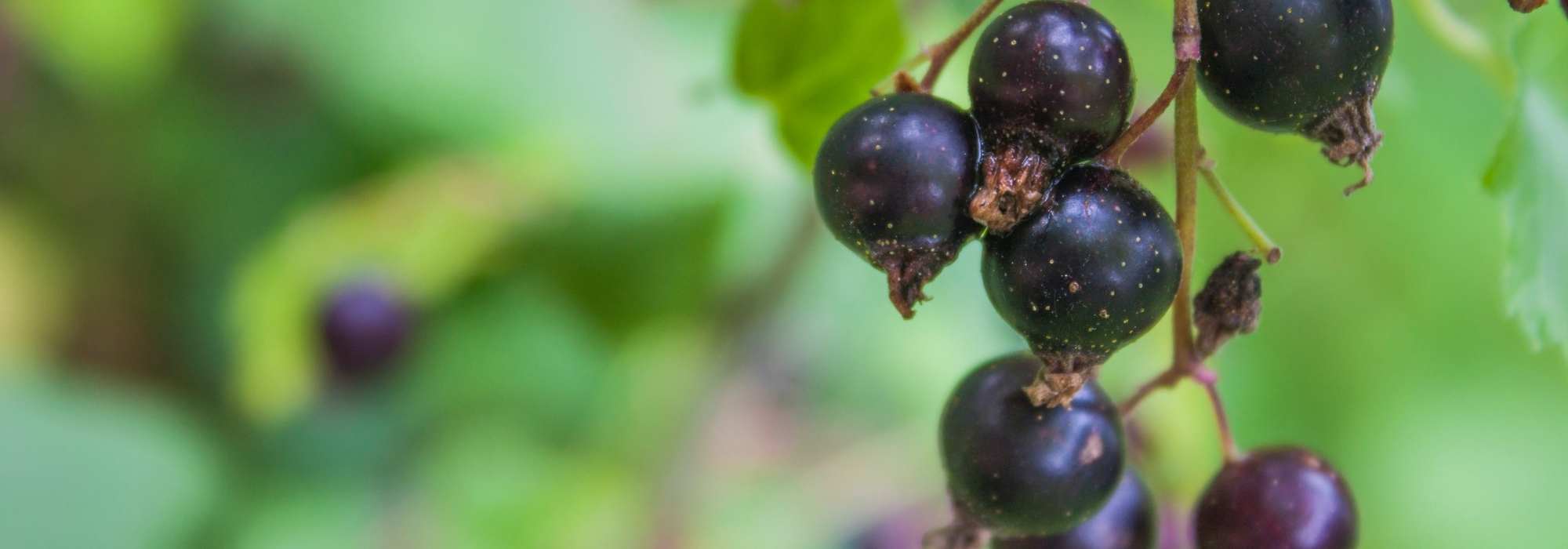
Blackcurrant: A Fruit Bush to Grow for Its Medicinal Benefits
All About the Health Benefits of Blackcurrants
Contents
The blackcurrant (Ribes nigrum) is a small fruit-bearing bush with fragrant black berries that often provide great gustatory pleasure. Yet, the discreet little berries of the blackcurrant bush, used for centuries in natural remedies, are packed with treasures for our health. A powerful antioxidant, immune system protector, heart supporter and ally against inflammation, blackcurrant fully deserves its place among superfoods. Whether consumed as fresh berries, juice, or herbal tea, blackcurrant proves to be a valuable partner for looking after your wellbeing.
Let’s explore together what blackcurrant has to offer, and discover its various uses, benefits and precautions to take.
To learn more: Blackcurrant bush: planting, pruning and care
Blackcurrant, a treasure trove of health benefits
A member of the Grossulariaceae family, blackcurrant belongs to the Ribes genus, just like raspberries (Ribes idaeus). Native to Europe and Asia, blackcurrant stands out for its small tangy black berries harvested in the heart of summer, between June and August, depending on the variety. Prior to fruiting, the blackcurrant bush produces yellowish flowers, grouped in pendulous clusters, which attract swarms of pollinating insects. It is these insects that ensure the pollination leading to the formation of the globose fruits.
As for the foliage, it is alternate and lobed, of a rather dark green. When crushed, it releases very pleasant aromatic scents, a good indication of its uses. 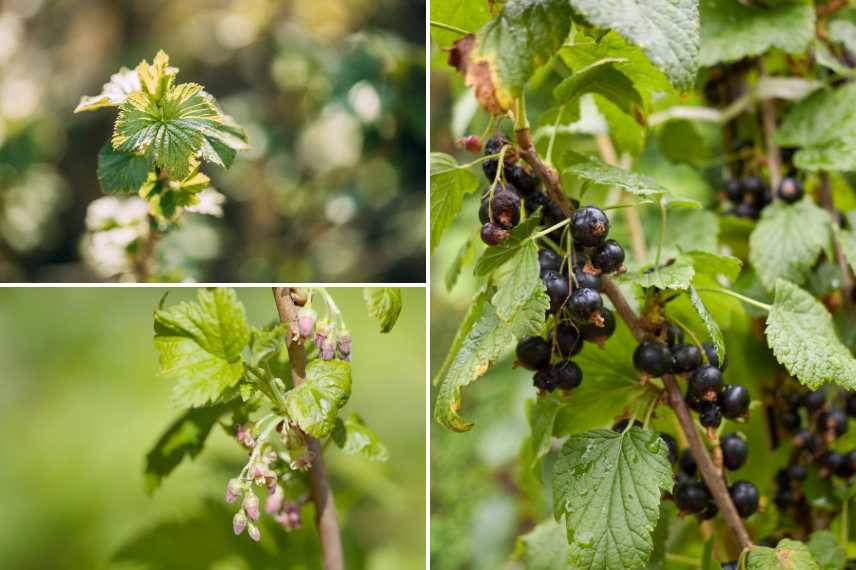
Beyond their taste qualities, the small black berries of blackcurrant bushes are renowned for their richness in nutrients and beneficial active compounds:
- They are four times richer in vitamin C than oranges.
- They contain flavonoids and anthocyanins (responsible for their black colour) with powerful antioxidant effects, as they trap free radicals.
- They contain omega-6 (gamma-linolenic acid), which supports cellular well-being.
- They are rich in iron and calcium, in appreciable quantities.
- They are packed with fibre, essential for good digestion.
Thanks to this exceptional composition, blackcurrant is often referred to as a “superfruit”. But its benefits are not limited to its nutritional richness: it is also prized in phytotherapy for its many medicinal properties.
How to use blackcurrant for medicinal purposes?
Blackcurrants can be enjoyed in various forms to benefit from their therapeutic properties. So many ways to indulge while doing yourself good at the same time.
Fresh berries
Blackcurrant berries can be eaten as they are. But also as juice, since blackcurrant juice is an excellent natural tonic. It boosts energy, strengthens immunity and helps fight fatigue. To be drunk neat or diluted, it’s ideal for a vitamin boost. Blackcurrant juice is also one of the vascular tonics and protectors, effective in cases of venous insufficiency or haemorrhoidal crisis.
Finally, you can prepare a herbal tea with fresh blackcurrant berries. Simply place 2 to 3 g of berries in a 250 ml cup of boiling water and drink this infusion for three weeks. It will have the same effects as the juice.
Leaf infusion
For this infusion, the leaves can be used fresh or dried. You’ll need three fresh leaves or a tablespoon of dried leaves in a cup of boiling water. Leave to infuse for 10 minutes. Fragrant and mildly flavoured, this infusion needs no sugar. During periods of inflammation (joints, rheumatism, cellulite), it is recommended to drink 3 to 4 cups a day.
Blackcurrant leaves are often used in infusions for their anti-inflammatory and diuretic properties. They are particularly recommended for joint pain or water retention. They are also said to improve blood circulation and aid digestion.
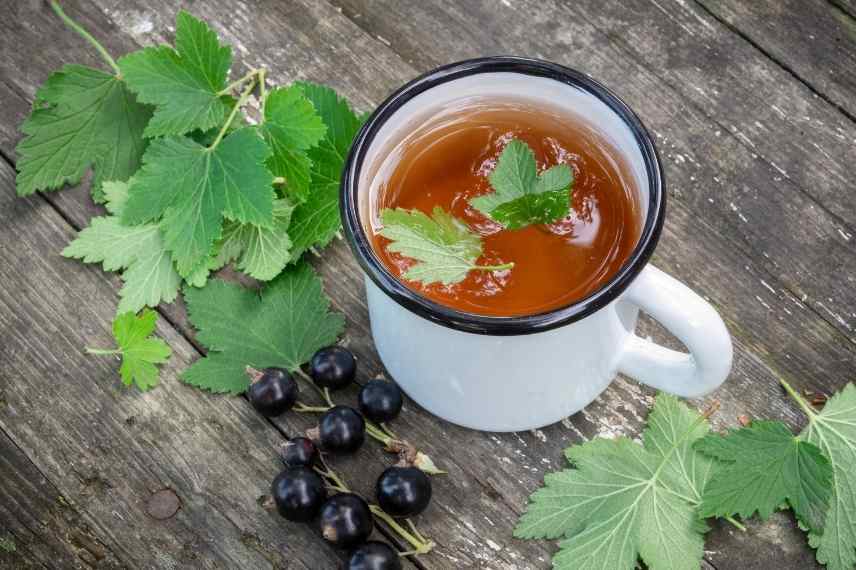
Blackcurrant leaf infusion is renowned for its anti-inflammatory properties
Marion explains how to dry blackcurrant leaves?
Topical application
Fresh blackcurrant leaves are recommended to relieve pain caused by wasp and hornet stings. Simply crush fresh leaves and rub gently on the sting to release the juice.
Bud macerate
While bud macerate can be found in specialist gemmotherapy shops, you can also make it yourself. Simply harvest buds in spring, place them in a jar and pour in a mixture of alcohol and glycerine, 5 times their height. The jar is sealed airtight and the mixture must macerate for two days. Then press and filter.
This macerate is used for rheumatism, tendonitis, allergies and fatigue. A few drops under the tongue are enough to reap all the benefits.
What are the benefits of blackcurrant?
Blackcurrant is a true powerhouse of health benefits. Easy to consume in various forms, it’s a natural ally of choice for daily wellbeing.
Joint Support
Blackcurrant is an ally against joint pain in general, whether related to osteoarthritis, rheumatism, or chronic inflammation, thanks to its anti-inflammatory and pain-relieving properties. Indeed, inflammation plays a major role in most joint pain, and blackcurrant contains several compounds, such as anthocyanins (natural pigments) and omega-6 (an essential fatty acid), which help reduce this inflammation.
When consumed as a leaf infusion, blackcurrant may have a draining and detoxifying effect, helping to eliminate toxins that sometimes exacerbate joint pain. Its diuretic properties aid in flushing out waste and reducing local inflammation, such as in gout.
A Powerful Antioxidant
Thanks to its high flavonoid and vitamin C content, blackcurrant helps neutralise free radicals, which cause oxidative stress, leading to premature cell ageing and the risk of degenerative diseases.
Once again, flavonoids and anthocyanins (protective pigments) are potent antioxidants. As for vitamin C, it plays a key role in neutralising free radicals.
An Ally for the Immune System
Blackcurrant’s high vitamin C content may boost natural defences, helping the body fight seasonal infections like colds or flu. Additionally, blackcurrant bud macerate, known for its anti-allergenic properties, could help relieve hay fever and asthma.
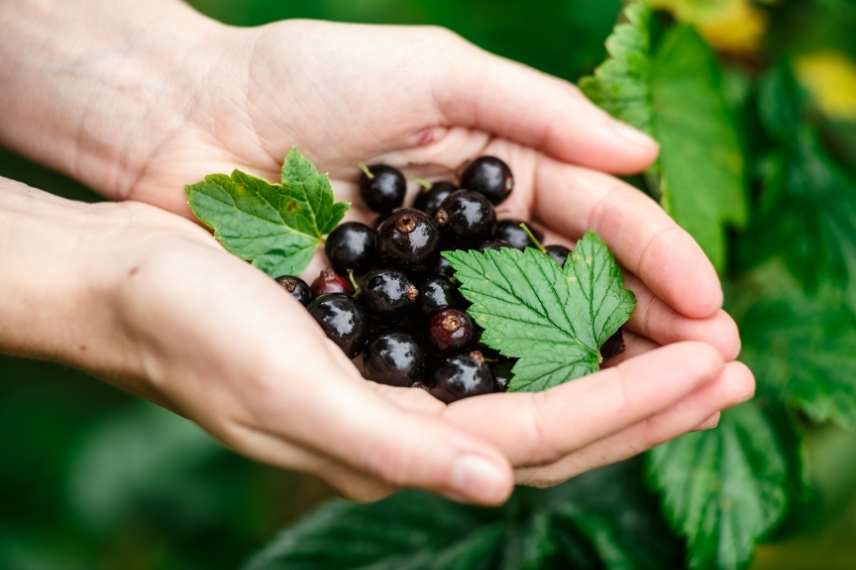
Blackcurrant has strong antioxidant properties
A Cardiovascular Protector
Blackcurrant’s anthocyanins may support vascular health, reduce hypertension, and promote optimal blood circulation.
A Natural Detoxifier
Thanks to its diuretic effects, blackcurrant may aid toxin elimination and combat water retention.
A Digestive Aid
Blackcurrant leaves are used to soothe heartburn and indigestion while stimulating digestion. Its fibre content also supports healthy bowel movements.
A Beneficial Effect on Vision
By toning blood vessels, blackcurrant may positively influence eyesight. Indeed, it contains lutein and zeaxanthin—essential nutrients that protect the eyes from UV rays and reduce the risk of age-related macular degeneration.
What are the side effects and contraindications of blackcurrant?
Although blackcurrants are generally well tolerated, some precautions should be taken:
- Blood-thinning effect: people on anticoagulant treatment should avoid excessive consumption.
- Diuretic effect: to be avoided in cases of severe kidney failure.
- Allergy risk: although rare, some people may be sensitive to blackcurrant components.
If in doubt, it’s best to seek advice from a healthcare professional before starting a course.
Did you know?
Blackcurrant is an ancient remedy. The earliest accounts of its properties date back to Hildegard of Bingen, a 12th-century German Benedictine nun, who recommended using blackcurrant leaves as an ointment against gout. In 1712, Abbé Pierre Bailly de Montaran published The Admirable Properties of Blackcurrant, a literally dithyrambic work on blackcurrant, which he presented as a healer for both humans and animals. A veritable elixir of life, in short!
In the 18th century, blackcurrant became a beloved fruit plant among the French, who grew it in their gardens. Its cultivation flourished in Burgundy, where it now benefits from a PGI (Protected Geographical Indication). At that time, blackcurrant young plants were planted at the end of vineyard ranks. And it was used to make ratafia.
At the beginning of the 20th century, in Paris, bistros would graciously provide their customers with a jug of blackcurrant, just like bread, salt, and mustard.
- Subscribe!
- Contents
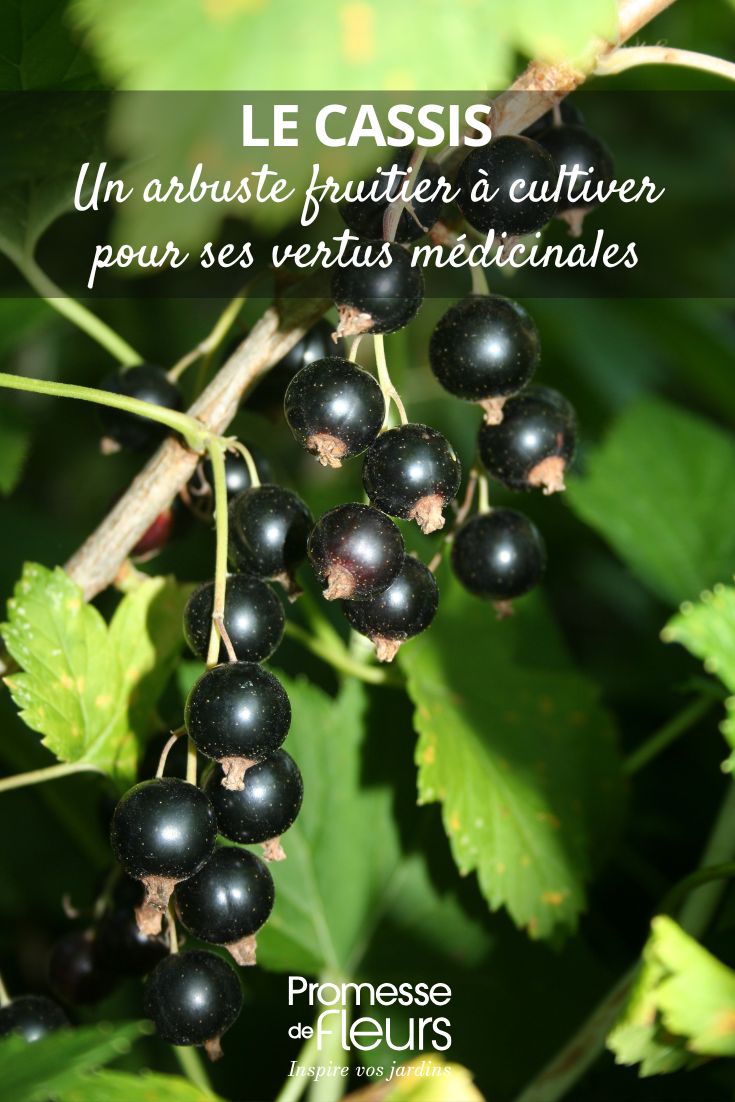































Comments